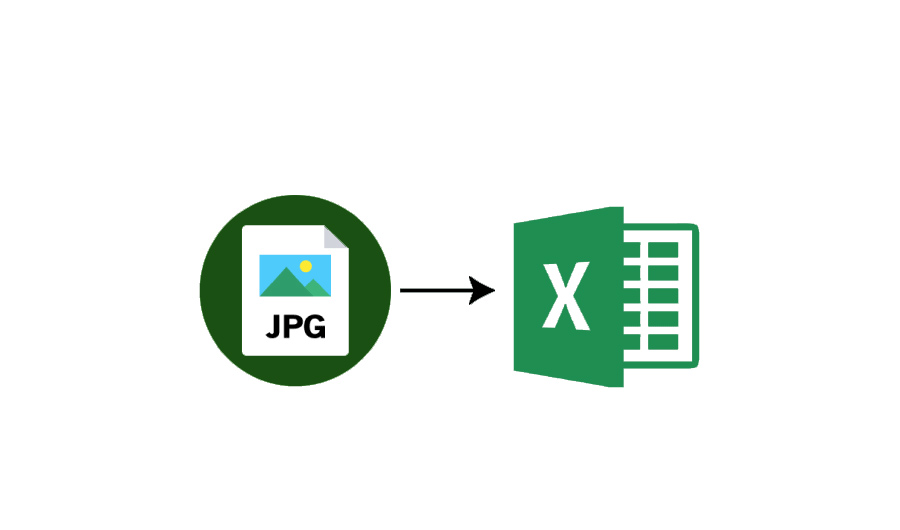
How to Test and Optimize Your Book Cover Design for Maximum Impact
In the bustling world of bookstores, authors are amazed by the spectrum of creativity that adorns each book and face constant pressure to ensure their own work, including its cover, stands out amidst the crowd. Leaving a lasting impression becomes crucial, particularly in a market where the expertise of book cover designers uk can make all the difference.
It’s widely acknowledged that readers swiftly judge books based solely on their covers, seeking a blend of familiarity and novelty. Whether displayed on the screen of an e-reader or nestled within the pages of a paperback, they desire a book that not only catches their eye but also promises a journey worth embarking upon. A captivating cover design serves as a signal, signaling to readers that the treasure within is deserving of their time and attention amidst the flood of books released annually.
In this comprehensive guide to book design, we’ll demonstrate how to craft a cover that narrates a tale even before the book is opened. We’ll give you tips on how to design a book cover.
Things you must know about book covers
To ensure that your book stands out in its genre, you must have a striking cover that attracts readers’ attention and piques their interest. Before getting into the technicalities of cover design, it’s important to understand some fundamental realities. While creating a cover may seem difficult, keep in mind that you do not have to do it alone. Thorough research is essential, and getting appropriate support can significantly benefit your project.
Book covers have a substantial impact on readers’ purchasing decisions, with 79% stating that a cover influences their choice. Given our tendency to evaluate books by their covers, utilizing this opportunity to effectively engage readers is critical.
Engaging experienced book cover designers in the UK can often prove beneficial because they can expertly bring your concept to life. While hiring a designer may incur a financial cost, it can dramatically improve the quality and appeal of your finished product.
Doing research on what people like is also really important when you’re making a cover for your book. Looking at the most popular books in your type of book, staying updated on how book covers are designed, and knowing what readers prefer can all give you good ideas for your own cover. Getting help from professional book cover designers in the UK can make your job even better because they know exactly how to make covers that catch people’s eyes, especially for the UK market.
Recognizing the value of a striking cover, obtaining professional assistance when necessary, and completing extensive market research will help your book stand out and attract readers.
How to Design a Book Cover – Step by Step Guide
Step 1: Do your research
When researching, look at book covers on Amazon Best Sellers or sites like Book Cover Archive. See what catches your eye and why. Look at many covers to gather ideas. Focus on covers in your book’s genre. What do you like or dislike about them? How can your cover be unique? Take notes but don’t copy. Think creatively about how your cover can stand out.
Step 2: Figure out the genre
It is critical to understand the genre into which your work fits when writing a novel. Even when writing non-fiction, there are various subgenres that can be used to guide readers toward works they’ll enjoy. Writing a book about wedding planning, for instance, falls under the “self-help” category. Your book may fall under the cookbook category if it teaches readers how to prepare bread.
Your mystery book may fall under the cozy mystery or cozy crime fiction category if the protagonist is an amateur investigator. Selecting the appropriate genre for your book might help it stand out from the competition and draw in more readers.
Step 3: Create a mood board
Making a mood board is the third step in the process of how to design a book cover. A mood board is an assortment of pictures, hues, and typefaces that correspond with the tone of your narrative. Your cover should be eye-catching, but it also needs to evoke the appropriate emotion for your book.
If you’re creating a horror book, for instance, you might want to use pictures of blood and skulls. On the other side, you might want to include pictures of gorgeous people holding hands or kissing if you’re writing a romance book. Using Pinterest to build a mood board is the greatest option.
Step 4: Choose a layout
Once you’ve outlined your book cover design and envisioned its appearance, it’s time to select the layout. You can opt for a simple or complex cover design.
For a simple cover, ensure the color scheme aligns with your book’s story and genre. Avoid bright colors for genres like horror. Complex covers involve professional artwork, illustrations, and text to grab attention.
There are different types of covers:
- Traditional: Includes title, author name, and summary. Ideal for fiction but lacks detail for nonfiction or memoirs.
- Text-only: Clean design without imagery, suitable for conveying information quickly, especially for nonfiction. Can also be used for fiction with clear typography and purchase links.
- Illustrated: Features images reflecting story elements like characters or settings. Great for immersing readers in your world.
Step 5: Create a striking title
Although we’ve already discussed titles, it’s imperative that your title grabs attention on your cover.
Should a person be searching for a particular title and it isn’t instantly identifiable on the cover, they might quickly skim over it. Strong hints regarding a book’s substance can also be found in its title.
Ensure your headline is readable in both tiny and large font sizes and contrasts sharply with the backdrop images.
Step 6: Find a font that matches your typeface
Picking the right font for your book cover is crucial. It must be easy to read and match your content’s vibe. Consider print and digital use and your book’s genre. For example, historical fiction might use serif fonts, while modern designs might opt for sans-serif. Romance novels often use script-style fonts.
How to design a book cover: For instance, Michael Johnson’s “Success!” uses bold colors and a comic-style font, signaling it’s a comic book. Notice how he combines two fonts for contrast, but using more can clutter the cover. Stick to one font for simplicity, unless you have lots of text.
Step 7: Test out colors
In this step of designing a book cover, it’s time to select the colors you’ll use. After choosing a color scheme and experimenting with variations, arrange all options on a single page. Rank them from least to most appealing to determine the best combinations. Compare how colors work together and consider any included photos or illustrations. Take time to carefully evaluate each option to ensure it aligns with your novel’s overall feel. If necessary, make adjustments until you find the perfect fit for your story and audience.
Step 8: Add illustrations, symbols, and other design elements
It’s time to put the finishing touches on your book once you have a solid notion of how it will look. Think about including symbols and graphics if you’re writing a print book. Verify that they complement the general style and tone of your book. Use a picture of a model wearing one of your ensembles, for instance, if your essay is about fashion.
To make sure your cookbook cover shows what’s inside, think about adding pictures of food or cooking tools. When you’re thinking about how to design your book cover, remember that different places might have different rules about what should be on it. For example, there are rules about what should be on the cover if you’re making an eBook for the Kindle.
Getting help from professional book cover designers in the UK can make sure your cover follows these rules and also fits with what your book is about. Whether it’s using colorful pictures of fruits and veggies or cool drawings of cooking stuff, adding food-related things can make your cookbook cover look better and show what your book is all about.
Step 9: Finalize the cover design
To bring your ideas to life and ensure your book cover looks good in print, create a mockup.
Here’s how:
- Use online tools like Canva or Visme for free customizable templates.
- Utilize Photoshop or Illustrator if you have access, or hire a designer on platforms like Fiverr or Upwork.
- Print your mockup to visualize it on physical copies.
- Ensure colors and fonts align with your brand identity, and verify readability on various backgrounds. Though it may take time, this process clarifies what works best for your book.
Step 10: Don’t forget about the back cover
Don’t overlook the spine and back cover of your book; they offer prime space for creator bios, endorsements, and summaries to entice readers. For an engaging spine, choose a legible font and prominently display your title and name. Keep it simple with contrasting colors to ensure readability.
On the back cover, include a captivating blurb, author bio, endorsements, awards, and relevant visuals. Don’t forget the barcode and ISBN placement.
For example, Jayk Sterkenburg’s “The Modern American Dream” features thought-provoking prompts, a pull quote, blurb, author bio, and personalized touches. Thoughtful design of these elements increases your book’s appeal to potential readers.
Design a memorable book cover that sells
The rise of eBooks and online booksellers has reshaped book cover design, yet the principles of good design endure. A book’s ability to captivate readers hinges on its cover.
For those unfamiliar with design programs like Adobe Photoshop or Illustrator, internet templates can be invaluable resources. However, it’s advisable to seek skilled independent book cover designers in UK specializing in crafting compelling covers that drive sales.
Understanding how to design a book cover is crucial in today’s digital landscape, and enlisting professional expertise can greatly enhance its effectiveness.
FAQs
Can you design your own book cover?
It is possible to create your own book cover. Both authors with a solid experience in design and those on a tight budget might consider this alternative. Hiring a professional designer, though an investment, can elevate your book’s appeal and professionalism. Market research is crucial for understanding trends and audience preferences, informing design decisions.
How to design a book cover that is effective?
When designing a book cover, gather inspiration, outline themes, consider genre, use visual hierarchy, remove clutter, envision thumbnail appearance, select appropriate fonts/colors, and ensure the title stands out.
What makes a book cover design successful?
Make use of legible and genre-appropriate typefaces. To draw attention to the key text on your cover, such as your title, use text hierarchy. To make your text stand out and draw readers in, create contrast between it and the background colors.
Do authors design their book covers?
That’s it, then. Book covers are very important. The publisher and author work together to come up with them. It’s not always simple, and occasionally covers alter in reaction to criticism or in order to accomplish different goals for several editions.
Is book cover design graphic design?
Book covers, akin to posters, blend graphic design, typography, and image compositing, incorporating illustration and photography to create a captivating visual narrative.
Is Canva good for designing book covers?
Canva offers the widest selection of book cover designs on the internet. These excellent templates have been painstakingly created by a talented team of designers to improve the credibility and marketability of your book.





